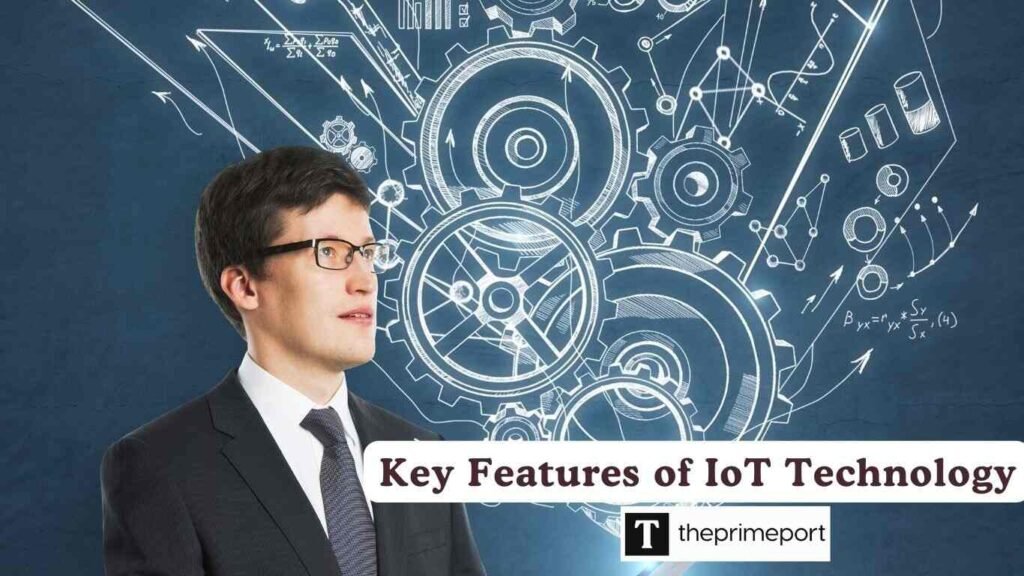Try to picture a reality that is inform and guided by technologies which include the ability for your coffee maker to know when you are awake, your car rerouting itself in the middle of your drive based on traffic information. This is the Internet of Things in action involves merging various devices into a single network of devices that are able to provide more intelligent, and safer services to humanity. Be it a house fit with integrate, wearable gadgets or industrial cobweb and smart cities, IoT is changing the world. On the cusp of this technological advancement, IoT’s requirements and opportunities for expansion seem only bound by one’s imagination or fear from what can be imagine. In this article we will explore IoT Technology and its applications.
What is IoT?
Internet of things(IoT) refers to the connection of devices that have the capability of communication and interaction with other devices and cloud. Examples of such devices are ordinary items in the home, including utensils, clothes, and cars, all of which have technology such as sensors and software built in their systems. IoT is a network transfer of data with the exclusion of computer-to-human interactions and computer-to-computer interactions and thereby redefine the behavior and performance of devices and systems.
An Overview of IoT Technology
IoT systems work via acquiring data from sensors implemented within the devices, transferring these data through an IoT gateway, solving them using back-end systems or applications. The ecosystem includes a sensing element, which can be represent by sensors or devices, connective services, through which data collect by the sensors can be access; the analysis services, on which processing of the collected data depends; and the presentation layer in the form of a UI. These elements integrate to get data with ease, analyze it and take action, most times not requiring human input.
Key Features of IoT Technology

1. Interconnectivity: That is in regard to their connectivity, where IoT devices are capable of exchanging data between them.
2. Automation and Control: Ken recently learned that IoT allows for optimisation of processes and activities. And this might mean minimal interaction from individuals.
3. Real-time Data Processing: The internet of things harvest information in real-time and make it real-time as well.
4. Scalability: It is possible to have IoT systems to accommodate more devices and processes or to add new ones as and when expected.
5. Data Analytics: IoT systems analyze vast amounts of data to derive actionable insights.
Applications of IoT Technology
IoT has a wide range of applications across various sectors:
1. Agriculture: Thus, IoT benefits farmers in the following ways: It provides timely information on environmental factors to support farming. It introduces mechanisms to perform several related techniques in farming. It can also record the contents of the soil, the humidity and temperatures. A great boost to managing crops and animal health.
2. Construction: Safety is an important parameter that is being check continuously by sensors of infrastructures. And no more operational costs are being incorporated for better service quality.
3. Home Automation: Smart thermostats for temperature regulation, smart lighting control, and smart security cameras make environments in homes more comfortable and energy smart.
4. Smart Cities: By cutting down waste and energy usage, effective traffic signal regulation, and administration of public services. IoT enhances quality of urban life.
5. Healthcare: Portable health monitoring systems and wise gadgets give care suppliers complete records of the patient’s well-being and severe illnesses.
IoT Technology Devices
Devices which ‘make up’ the IoT environment are consider integral to the IoT environment. They vary form basic sensors to complex mechanical devices and these all are interconnect to exchange information on the network. Here are some common IoT devices:
- Smart Sensors: These devices have composed sensors that are able to garner data from the physical condition it is in like the temperature, humidity detectors, movement, and light detectors.
- Actuators: Sensors acquire information from the surrounding environment and transmit this data as electrical signals to the actuators that in turn cause physical changes such as ON/OFF control of a motor, opening/ closing a valve, or dimming/ brightening a lamp.
- Embedded Systems: It includes components like microcontrollers and microprocessors that decide how data from sensors is to be process or how commands issued by IoT applications are to be executed.
- Wearables: Wearable technology – it includes smartwatches, fitness trackers, and health monitors, which are devices fit to the body and constantly collect information about the user and their activities.
- Smart Appliances: Refrigerators, washing machines, ovens, etc which can be control and monitor using the internet through its connectivity through IoT.
Uncovering Industrial IoT
Another branch of IoT is called the Industrial Internet of Things or IIoT and it deals with connecting Industrial businesses such as manufacturing, transportation, and utilities. IoT is a combination of smart sensors and controls, intelligent actuating components, and analytics to optimize organizational activities and achieve more effectiveness at lower costs. It helps in managing the control of different industrial processes, detection of mechanical failures, and the management of logistic networks.
Key Benefits for IoT Technology Industries
1. Enhanced Efficiency: Smart IIoT makes working in industries better as it tends to automate certain processes while monitoring them at the same time.
2. Predictive Maintenance: Problems are identified and prevented from becoming snowballs leading to reduce equipment downtime and repairs.
3. Supply Chain Optimization: IoT data helps in efficient inventory, the minimization of wastage, andbetter logistics.
4. Increased Productivity: Sensitization, mechanization, and the use of data solutions increase efficiency, which lowers the cost of personnel.
5. Improved Safety: In the equipment and environments, improved and constant monitoring reinforces the workers’ safety and minimizes the dangers.
Examples of IoT Technology
The impact of IoT on the world is profound and far-reaching:
1. Smart Living: Smart home, wearable technology, and connect cars are among challenges sharp by IoT to improve daily existence.
2. Sustainable Development: IoT technologies facilitate optimization of the use of resources to enhance the probability of wastage and negative influence on the environment.
3. Economic Growth: While the Internet of Things (IoT) brings positive impacts. It fosters innovativeness and engenders new business ventures, contributing to the growth of the economy.
4. Enhanced Public Services: Smart city projects enhance public facilities including mobility, energy, water and sanitation, waste and recycling etc.
5. Healthcare Advances: Telemonitoring and telemedical technologies change the healthcare industry promoting health interventions that lead to reduced costs and better patient outcomes.
Conclusion
The implementation of IoT Technology is a revolutionary concept that renders a radical change to the functionality of various devices and systems regarding the acquisition and processing of information. This interconnection is enriched with artificial intelligence and machine learning, which expands the IoT’s utilization to also encompass data gathering and evaluation that is more dynamic and sophisticate.
Disclaimer
This overview provides a general understanding of IoT and its applications. The information is based on current technologies and trends, which may evolve. Readers are encouraged to conduct further research and consult industry experts for more detailed and specific insights into IoT and its implications.
FAQ’s
Ans. The proliferation of IoT devices introduces new security challenges, as each connected device can potentially become a target for cyberattacks. Ensuring robust security measures, such as encryption, secure firmware updates, and network segmentation, is crucial to protect sensitive data and maintain the integrity of IoT systems.
Ans. While IoT can lead to increased energy consumption due to the large number of connected devices, it also offers significant environmental benefits. IoT technologies enable more efficient resource management, reduce waste, and support the development of smart grids and renewable energy sources, contributing to sustainability and reduced carbon footprints.
Ans. The advent of 5G technology is expected to revolutionize IoT by providing faster, more reliable, and lower-latency connectivity.
Ans. IoT plays a crucial role in the development of smart cities by integrating various systems and services, such as transportation, energy management, waste management, and public safety. IoT sensors and devices collect and analyze data to optimize urban infrastructure, improve the quality of life for residents, and promote sustainable city planning.
Ans. The widespread use of IoT raises several ethical issues, including data privacy, surveillance, and consent. It is essential to establish clear guidelines and regulations to protect individuals’ privacy. And ensure that IoT devices are used responsibly and transparently.
Also,Read about-










